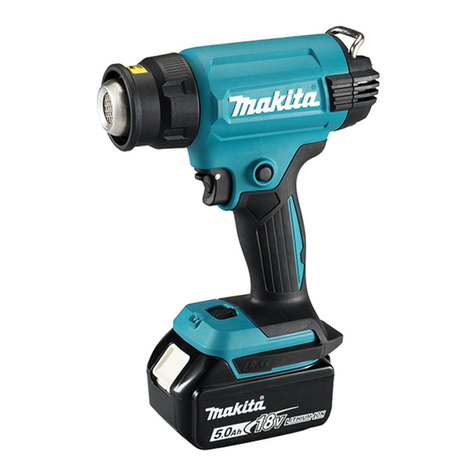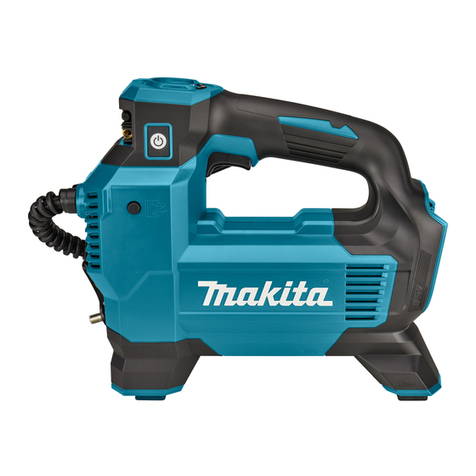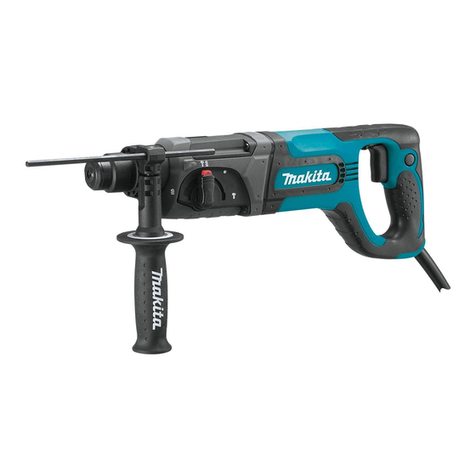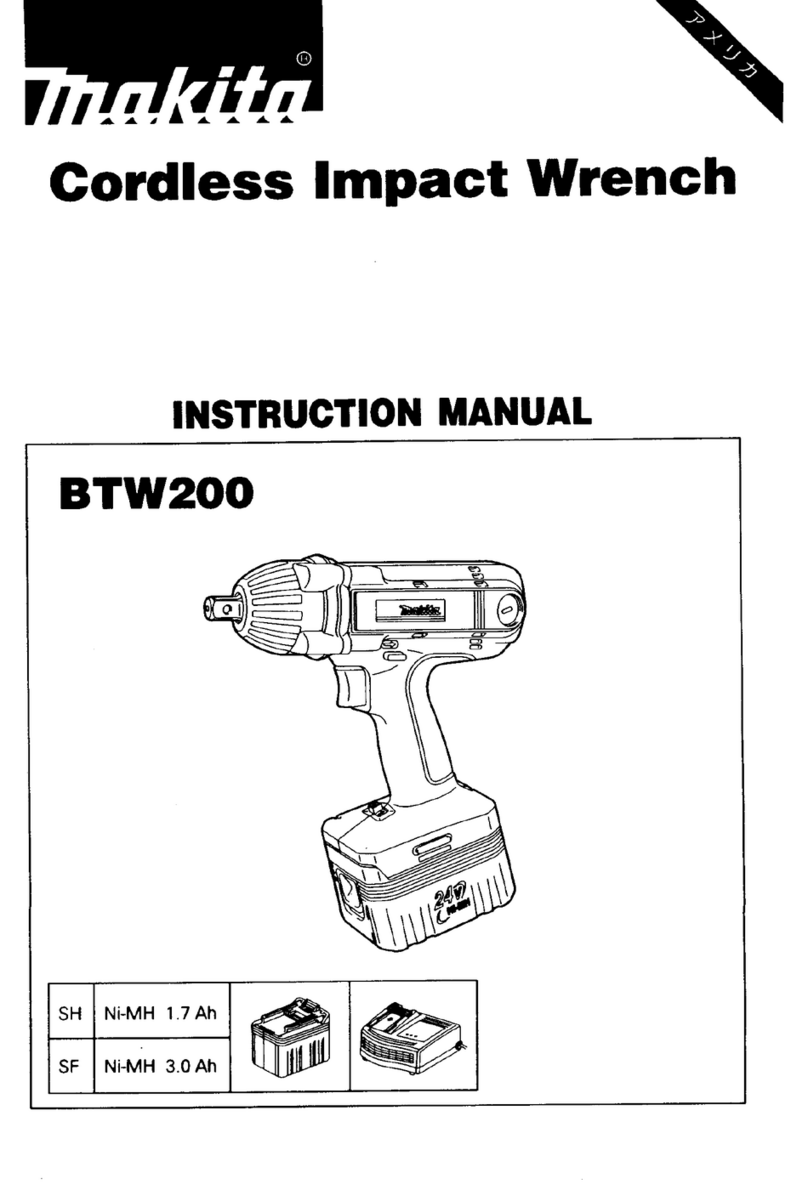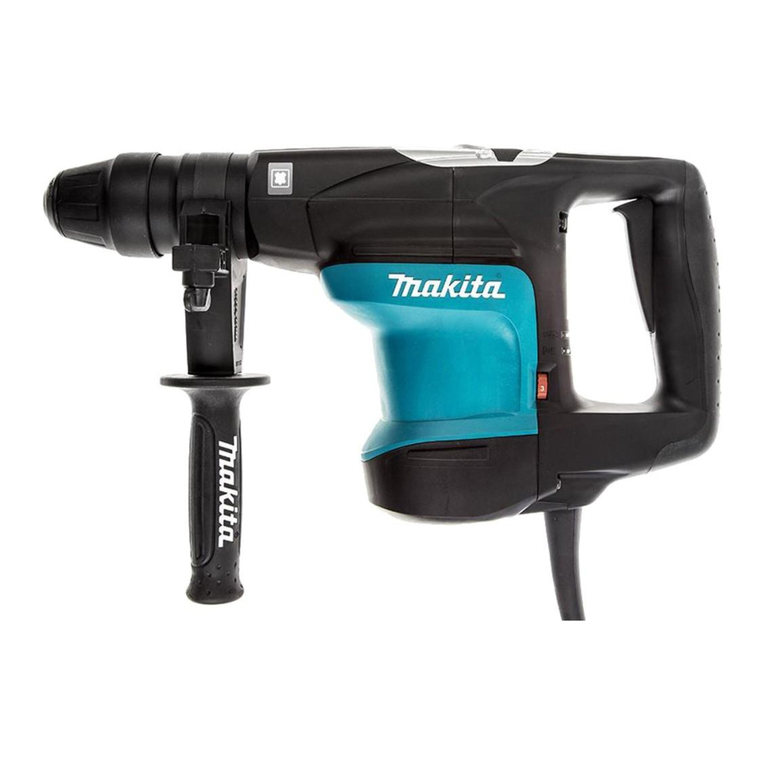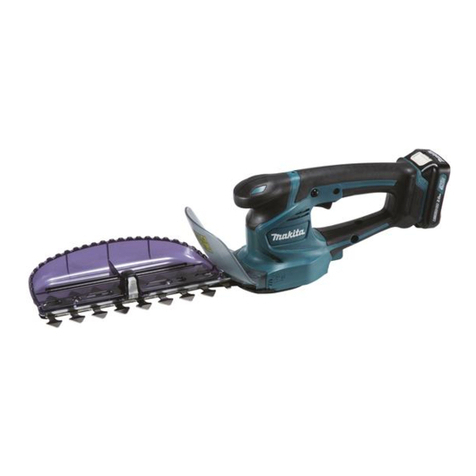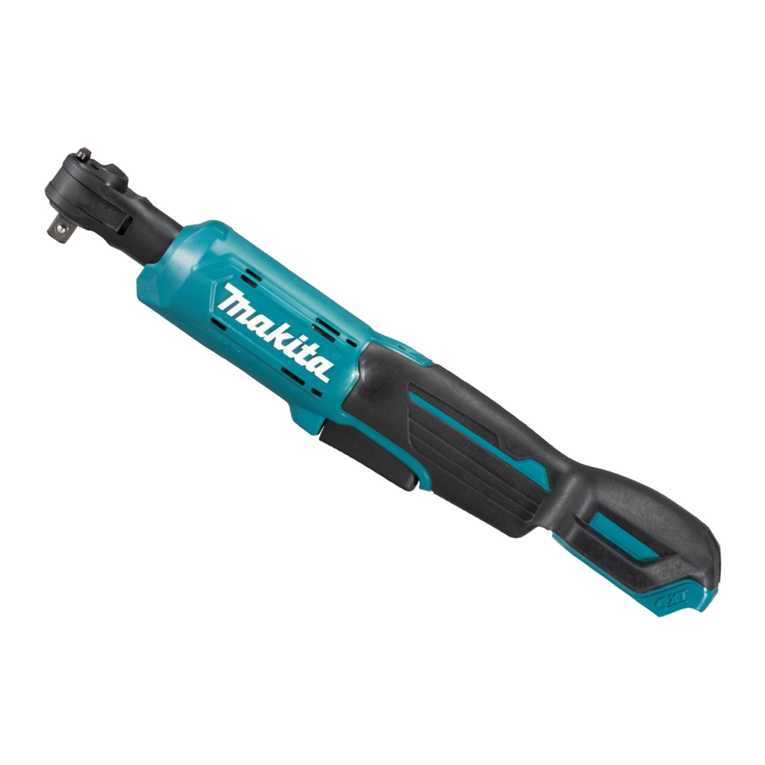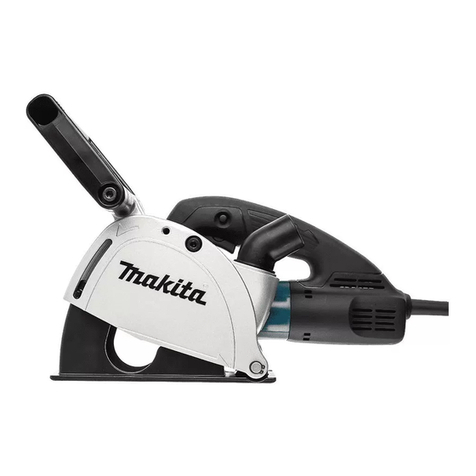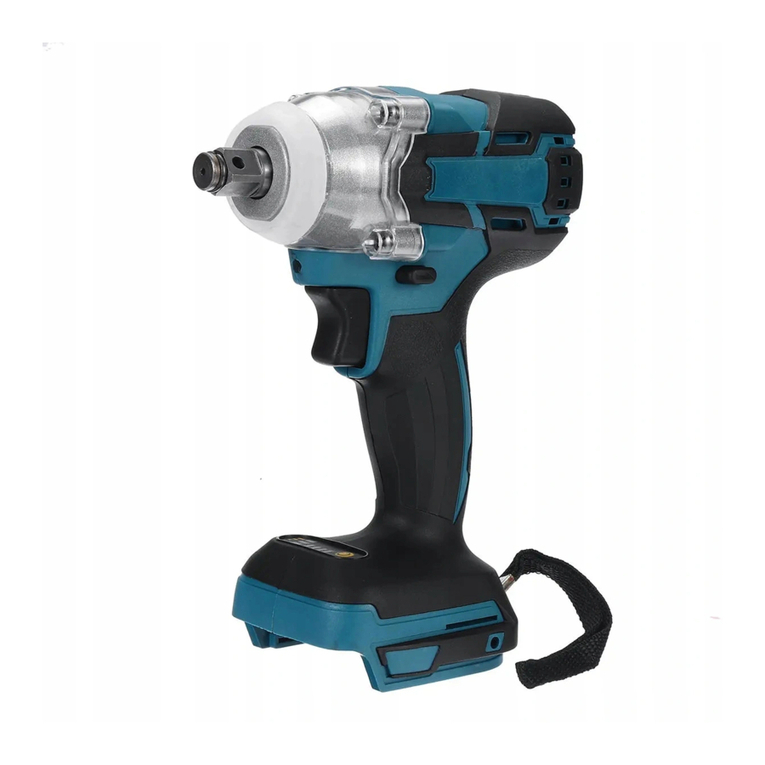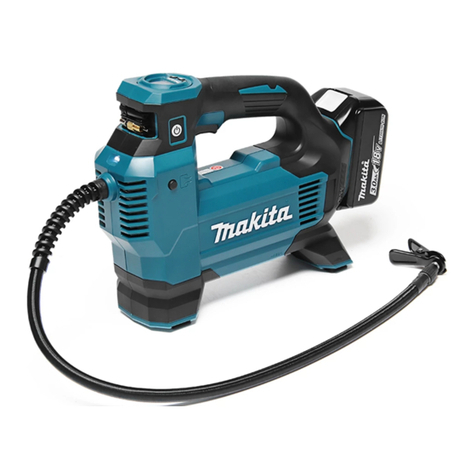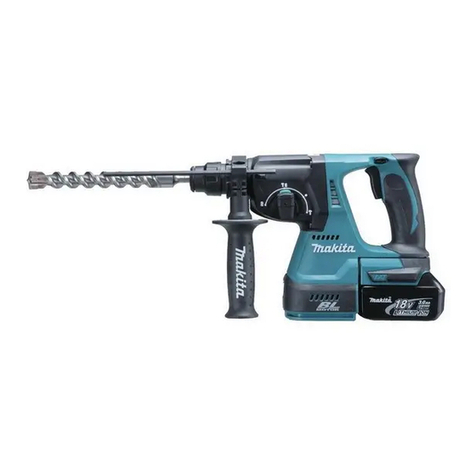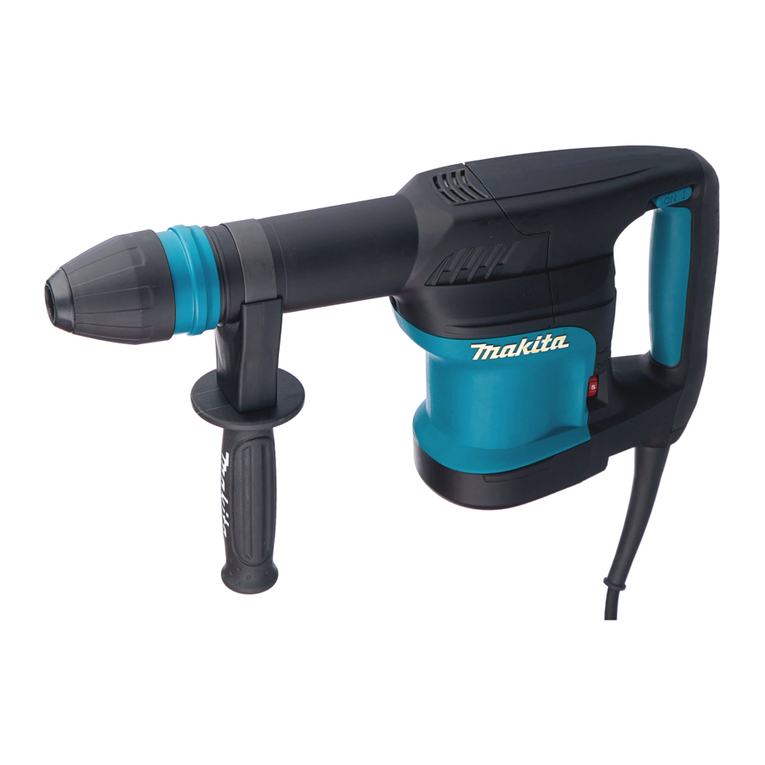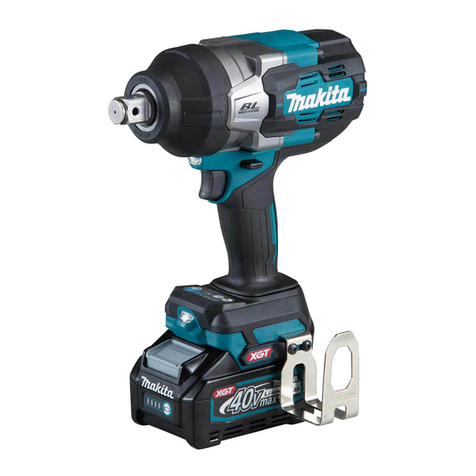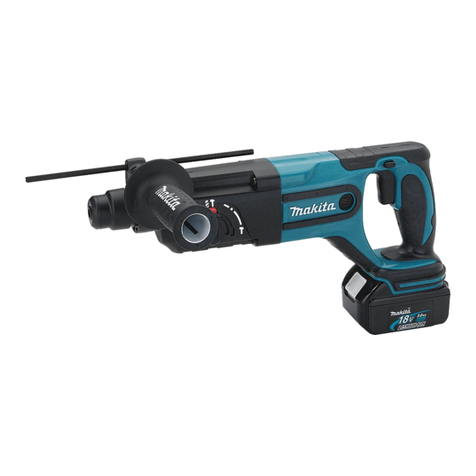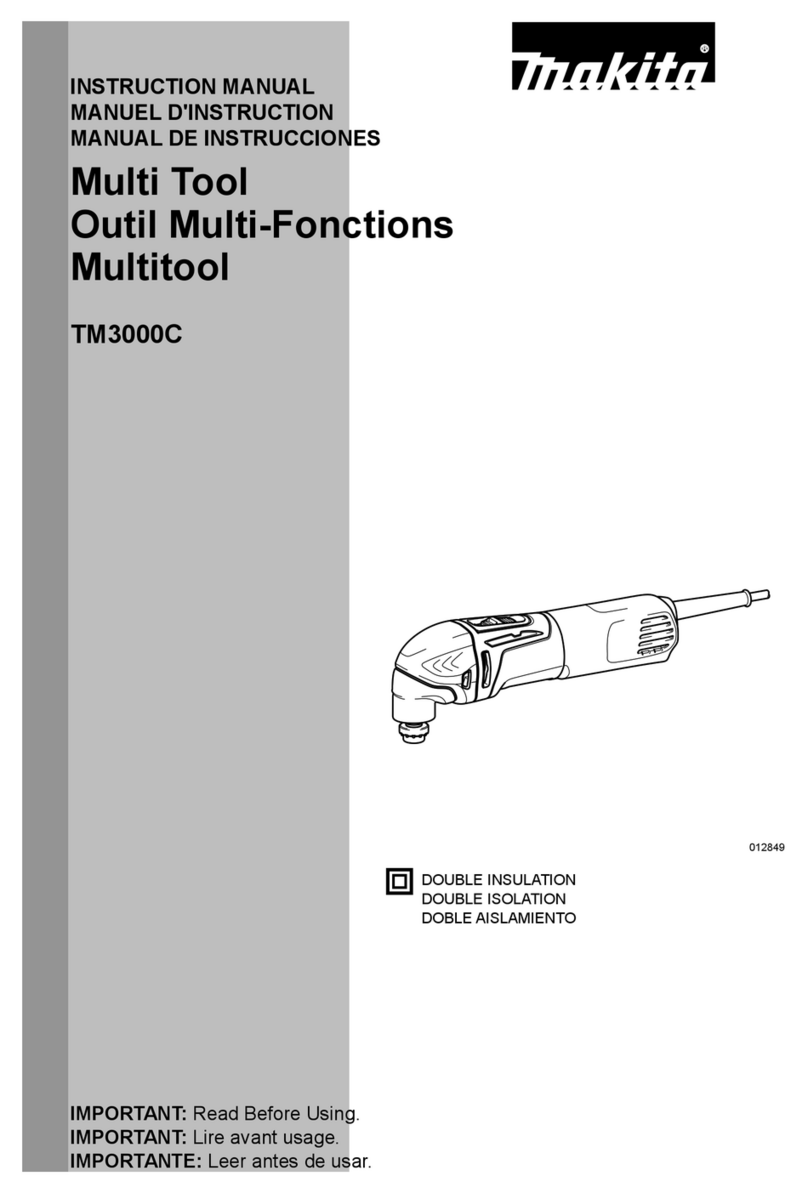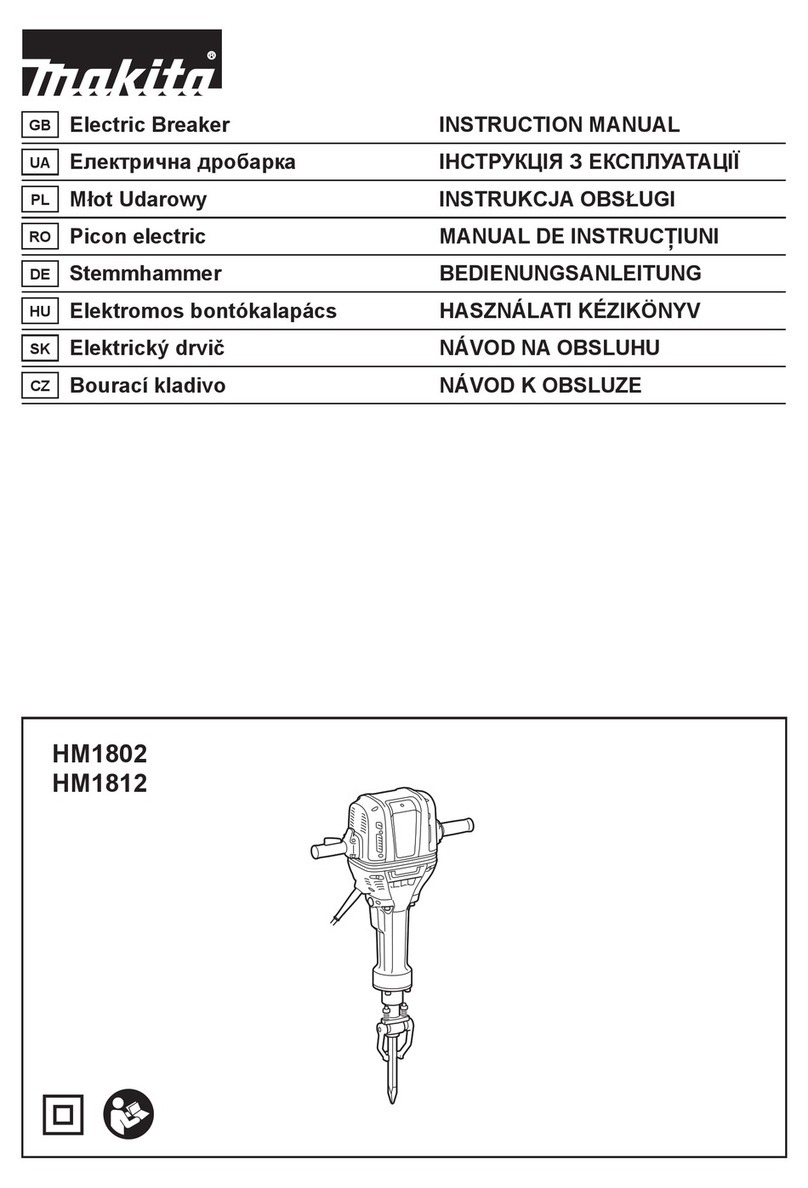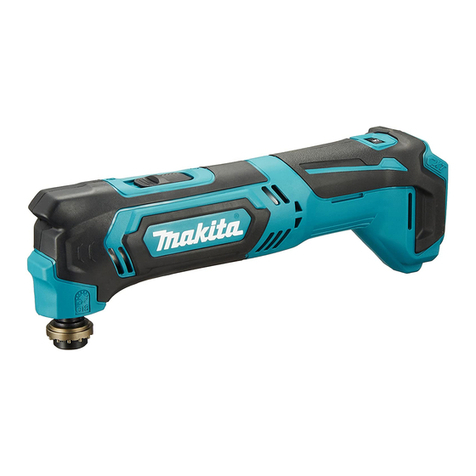
8
NOTE:
The overheat protection works only with a battery
cartridge with a star mark.
Fig.2
Indication lamp with multi function
Fig.3
Indication lamps are located in two positions.
When the battery cartridge is inserted on the tool with
the slide switch positioned in the "O (OFF)" position, the
indication lamp flickers quickly for approximately one
second. If it does not flicker so, the battery cartridge or
indication lamp has broken.
−Overload protection
−When the tool is overloaded, the indication
lamp lights up. When the load on the tool is
reduced, the lamp goes out.
−If the tool continues to be overloaded and the
indication lamp continues to light up for
approximately two seconds, the tool stops.
This prevents the motor and its related parts
from being damaged.
−In this case, to start the tool again, move the
slide switch to the "O (OFF)" position once
and then to the "I (ON)" position.
−Battery cartridge replacing signal
−When the remaining battery capacity gets
small, the indicator lamp lights up during
operation earlier than enough capacity
battery use.
−Accidental re-start preventive function
−Even if the battery cartridge is inserted on
the tool with the slide switch in the "I (ON)"
position, the tool does not start. At this time,
the lamp flickers slowly and this shows that
the accidental re-start preventive function is
at work.
−To start the tool, first slide the slide switch
toward the "O (OFF)" position and then slide
it toward the "I (ON)" position.
Adjusting the depth of groove
Fig.4
6 grooving depths can be preset according to the size of
biscuit to be used.
Refer to the table below for the correspondence
between the sizes marked on the stopper and the
biscuit size. Fine adjustments to the grooving depth can
be made by turning the adjusting screw after loosening
the hex nut. This may become necessary after the blade
has been resharpened a few times.
Size on stopper 0 10 20 S D MAX
Biscuit size 0 10 20
---
Depth of groove 8 mm 10 mm 12.3mm 14.7mm13 mm 20 mm
*
* With the rubber spikes removed.
012681
Angle guide
The angle guide height can be moved up and down to
adjust the position of the blade in relation to the top of
the workpiece.
Fig.5
To adjust the angle guide height, loosen the lock lever
down and rotate the knob until the pointer points to the
desired scale graduation marked on the angle guide.
Fig.6
Then tighten the lock lever up to secure the angle guide.
The scale on the angle guide indicates the distance
from the top of the workpiece to the center of the blade
thickness.
The angle guide is removable from the fence according
to the need of your work. To remove the angle guide,
loosen the lock lever and turn the knob clockwise until it
comes out of the upper end of the fence.
Fence
NOTE:
• Remove the angle guide according to the need of
your work when using the tool with the angle of the
fence adjusted to other than 0 ゚. When you need
to use the angle guide under the above condition,
be sure to adjust the depth of groove to get a
proper depth.
Fig.7
Fig.8
The angle of the fence can be adjusted between 0° and
90° (positive stops at 0°, 45° and 90°). To adjust the
angle, loosen the lock lever and tilt the fence until the
pointer points to the desired graduation on the angle
scale. Then tighten the lock lever to secure the fence.
When the fence is set at 90°, both the distance from the
center of the blade thickness to the fence and the
distance from the center of the blade thickness to the
bottom of the blade cover are 10 mm.
Set plate
Fig.9
Fig.10
Use the set plate as shown in the figures when cutting
slots in thin workpieces.
Switch action
Fig.11
CAUTION:
• Before installing the battery cartridge into the tool,
always check to see that the slide switch actuates
properly and returns to the "OFF" position when
the rear of the slide switch is depressed.
• Switch can be locked in "ON" position for ease of
operator comfort during extended use. Apply
caution when locking tool in "ON" position and
maintain firm grasp on tool.

